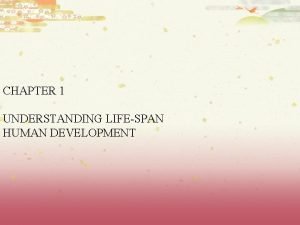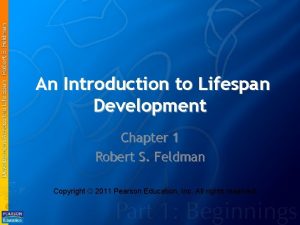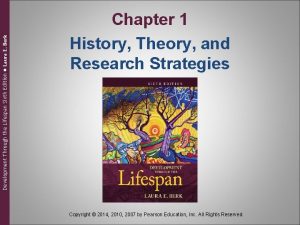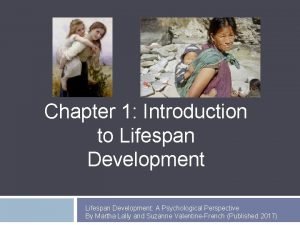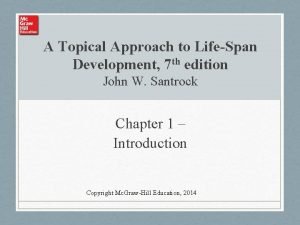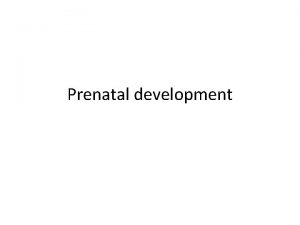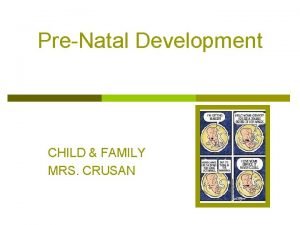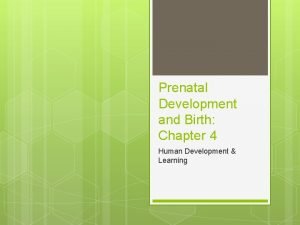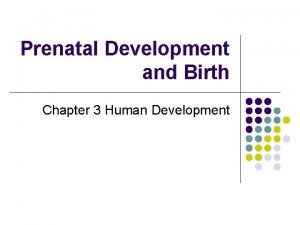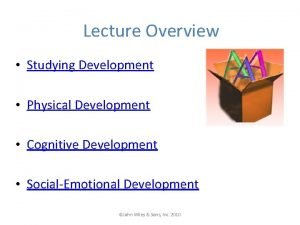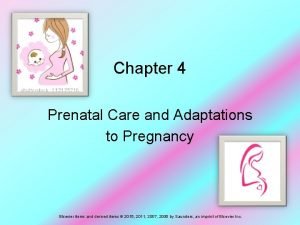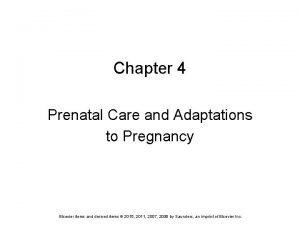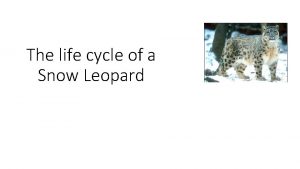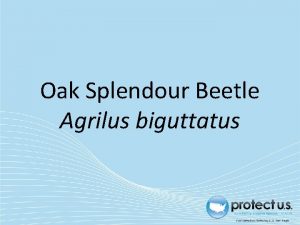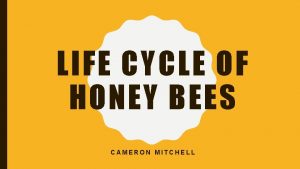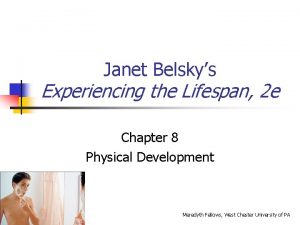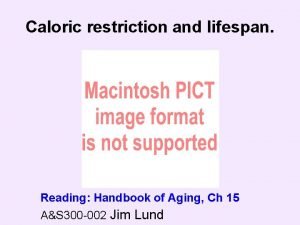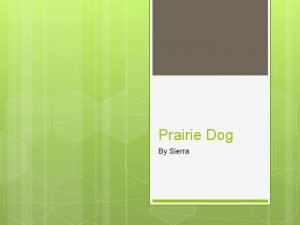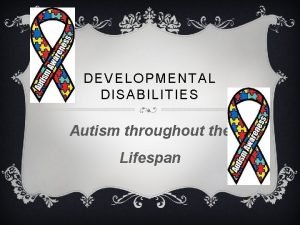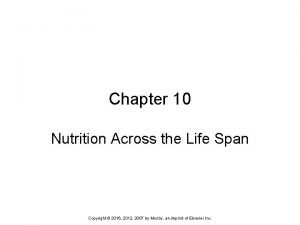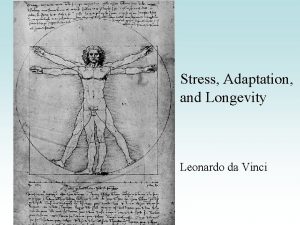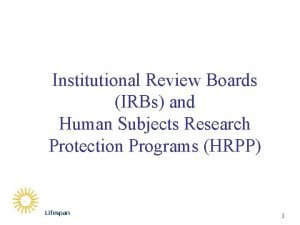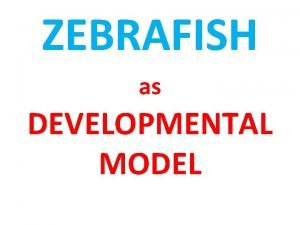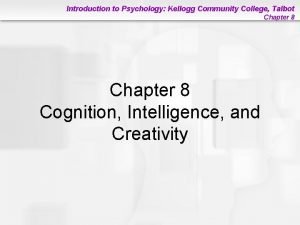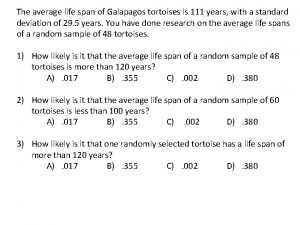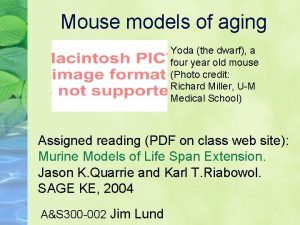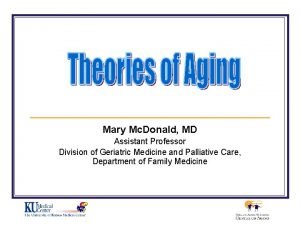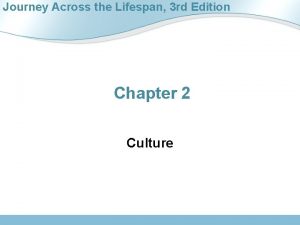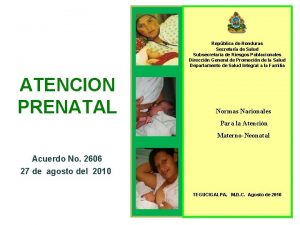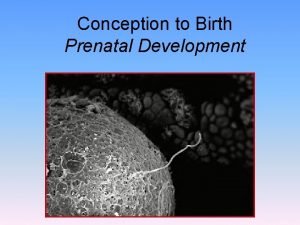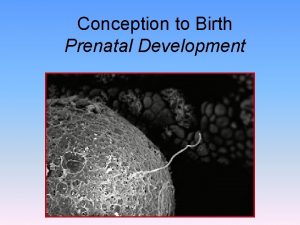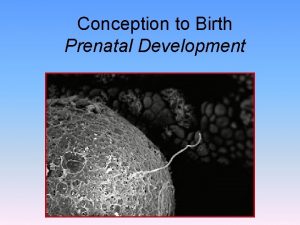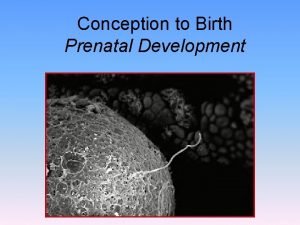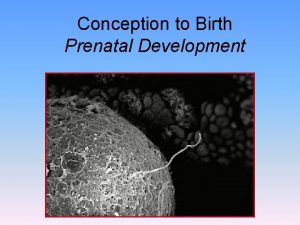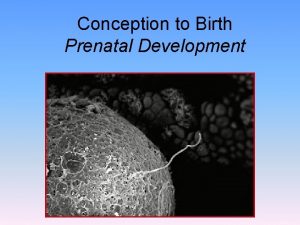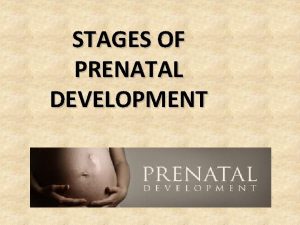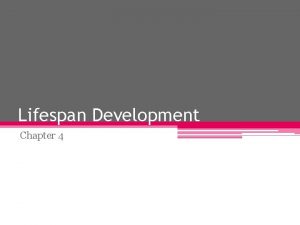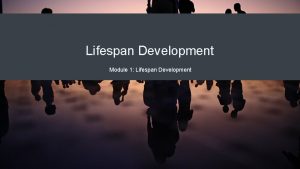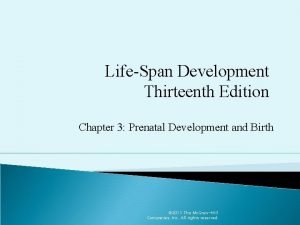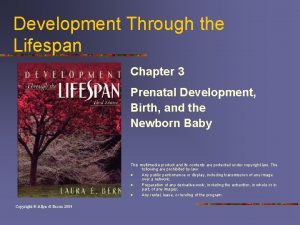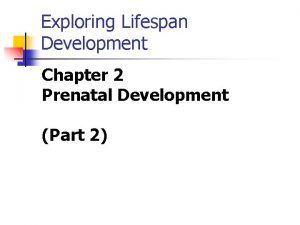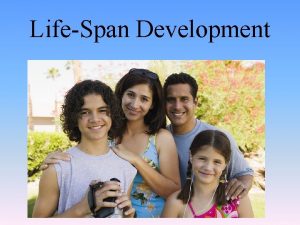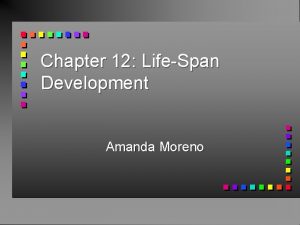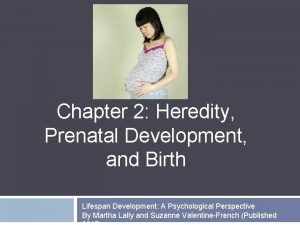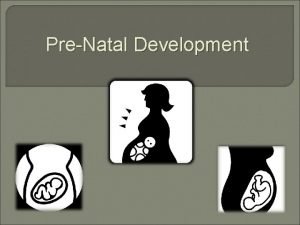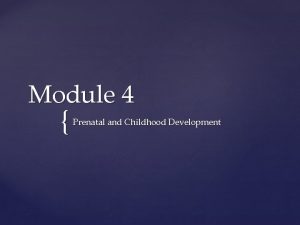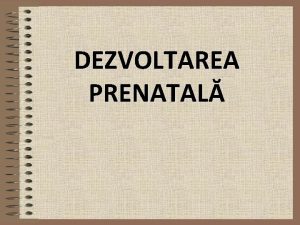Chapter 2 Lifespan Development Prenatal Development Prenatal defined
















































- Slides: 48

Chapter 2 Lifespan Development

Prenatal Development Prenatal defined as “before birth” Prenatal stage begins at conception and ends with the birth of the child. Zygote ◦ A newly fertilized egg ◦ The first two weeks are a period of rapid cell division. ◦ Attaches to the mother’s uterine wall ◦ At the end of 14 days becomes an embryo

Prenatal Development

Prenatal Development Embryo ◦ Developing human from about 14 days until the end of the eight week ◦ Most of the major organs are formed during this time. ◦ At the end of the eighth week the fetal period begins. Fetal Period ◦ The period between the beginning of the ninth week until birth

Prenatal Development Placenta ◦ A cushion of cells in the mother by which the fetus receives oxygen and nutrition ◦ Acts as a filter to screen out substances that could harm the fetus

Prenatal Development Play “Teratogens and Their Effects on the Developing Brain and Mind” (12: 44) Segment #12 from The Mind: Psychology Teaching Modules (2 nd edition)

Prenatal Development Teratogens ◦ Substances that pass through the placenta’s screen and prevent the fetus from developing normally ◦ Includes: radiation, toxic chemicals, viruses, drugs, alcohol, nicotine, etc.

Prenatal Brain Development Play “The Effects of Hormones and the Environment on Brain Development” (6: 50) Module #2 from The Brain: Teaching Modules (2 nd edition)

Prenatal Brain Development Fetal Alcohol Syndrome ◦ A series of physical and cognitive abnormalities in children due to their mother drinking large amounts of alcohol during pregnancy ◦ Symptoms include: Distinctive facial features, including small eyes, thin upper lip, a short, upturned nose and a smooth skin surface between the nose and upper lip Heart defects Deformities of joints, limbs and fingers Slow physical growth before and after birth Vision difficulties or hearing problems Small head circumference and brain size Poor coordination Sleep problems Mental retardation and delayed development Learning disorders Abnormal behavior, such as a short attention span, hyperactivity, poor impulse control, extreme nervousness

The Beginnings of Life: The Newborn Rooting Reflex ◦ Infants’ tendency, when touched on the cheek, to move their face in the direction of the touch and open their mouth ◦ Is an automatic, unlearned response ◦ Child is looking for nourishment. Temperament ◦ A person’s characteristic emotional reactivity and intensity ◦ A child might be: An “easy” or “difficult” baby ◦ Temperament shown in infancy appears to carry through a person’s life.

The Beginnings of Life: The Newborn Rooting Reflex Video

Physical Development in Infancy and Childhood Infant, Toddler, Child ◦ Infant: First year ◦ Toddler: From about 1 year to 3 years of age ◦ Child: Span between toddler and teen

Physical Development in Infancy and Childhood: The Developing Brain Neural Development Maturation ◦ Biological growth processes that enable orderly changes in behavior

Physical Development in Infancy and Childhood: Motor Development Includes all physical skills and muscular coordination

Cognitive Development in Infancy and Childhood: Piaget’s Cognitive Stages Cognition ◦ All the mental activities associated with thinking, knowing, and remembering ◦ Children think differently than adults do Jean Piaget ◦ Developmental psychologist who introduced a stage theory of cognitive development ◦ Proposed a theory consisting of four stages of cognitive development

Cognitive Development in Infancy and Childhood: Piaget’s Cognitive Stages Schemas ◦ Concepts or mental frameworks that people use to organize and interpret information ◦ Sometimes called schemes ◦ A person’s “picture of the world” Assimilation ◦ Interpreting a new experience within the context of one’s existing schemas ◦ The new experience is similar to other previous experiences

Cognitive Development in Infancy and Childhood: Piaget’s Cognitive Stages Accommodation ◦ Interpreting a new experience by adapting or changing one’s existing schemas ◦ The new experience is so novel the person’s schemata must be changed to accommodate it

Cognitive Development in Infancy and Childhood: Piaget’s Cognitive Stages Sensorimotor Stage ◦ Piaget’s first stage of cognitive development ◦ From birth to about age two ◦ Child gathers information about the world through senses and motor functions ◦ Child learns object permanence Object Permanence ◦ The awareness that things continue to exist even when they cannot be sensed ◦ “Out of sight, out of mind”

Cognitive Development in Infancy and Childhood: Piaget’s Cognitive Stages Object Permanence Video

Cognitive Development in Infancy and Childhood: Piaget’s Cognitive Stages Preoperational Stage ◦ Piaget’s second stage of cognitive development ◦ From about age 2 to age 6 or 7 ◦ Children can understand language but not logic Egocentrism ◦ The child’s inability to take another person’s point of view ◦ Includes a child’s inability to understand that symbols can represent other objects

Cognitive Development in Infancy and Childhood: Piaget’s Cognitive Stages Egocentrism Video

Cognitive Development in Infancy and Childhood: Piaget’s Cognitive Stages Concrete Operational Stage ◦ Piaget’s third stage of cognitive development ◦ From about age 7 to 11 ◦ Child learns to think logically and understands conservation Conservation ◦ An understanding that certain properties remain constant despite changes in their form ◦ The properties can include mass, volume,

Cognitive Development in Infancy and Childhood: Piaget’s Cognitive Stages

Cognitive Development in Infancy and Childhood: Piaget’s Cognitive Stages Formal Operational Stage ◦ Piaget’s fourth and last stage of cognitive development ◦ Child can think logically and in the abstract ◦ About age 12 on up ◦ Can solve hypothetical problems (What if…. problems) ◦ Play “Infant Cognitive Development” (7: 14) Segment #14 from The Mind: Psychology Teaching Modules (2 nd edition)

Cognitive Development in Infancy and Childhood: Assessing Piaget underestimated the child’s ability at various ages. Piaget’s theory doesn’t take into account culture and social differences.

Social Development in Infancy and Childhood Play “Social Development in Infancy” (6: 44) Segment #15 from The Mind: Psychology Teaching Modules (2 nd edition) Stranger Anxiety ◦ The fear of strangers an infant displays around 8 months of age

Social Development in Infancy and Childhood: Attachment ◦ An emotional tie with another person resulting in seeking closeness ◦ Children develop strong attachments to their parents and caregivers. ◦ Body contact, familiarity, and responsiveness all contribute to attachment.

Social Development in Infancy and Childhood: Attachment Harry Harlow ◦ Did research with infant monkeys on how body contact relates to attachment ◦ The monkeys had to chose between a cloth mother or a wire mother that provided food. ◦ The monkeys spent most of their time by the cloth mother.

Social Development in Infancy and Childhood: Attachment Harry Harlow Video

Social Development in Infancy and Childhood: Attachment Familiarity ◦ Sense of contentment with that which is already known ◦ Infants are familiar with their parents and caregivers. Imprinting and Critical Period ◦ A process by which certain animals, early in life, form attachments ◦ The imprinted behavior develops within a critical period-- an optimal period when the organism’s exposure to certain stimuli produce the imprinted behavior.

Social Development in Infancy and Childhood: Attachment Konrad Lorenz studied imprinting ◦ Goslings are imprinted to follow the first large moving object they see.

Social Development in Infancy and Childhood: Parenting Patterns Responsiveness ◦ Responsive parents are aware of what their children are doing. ◦ Unresponsive parents ignore their children— helping only when they want to Securely or Insecurely attached ◦ Securely attached – children will explore their environment when primary caregiver is present ◦ Insecurely attached – children will appear distressed and cry when caregiver leaves. W ill cling to them when they return

Social Development in Infancy and Childhood: Parenting Patterns Effects of Attachment ◦ Secure attachment predicts social competence. ◦ Deprivation of attachment is linked to negative outcome. ◦ A responsive environment helps most infants recover from attachment disruption. Parental Patterns ◦ Daumrind’s three main parenting styles Authoritarian parenting Permissive parenting Authoritative parenting

Social Development in Infancy and Childhood: Parenting Patterns Authoritarian Parenting ◦ Low in warmth ◦ Discipline is strict and sometimes physical. ◦ Communication high from parent to child and low from child to parent ◦ Maturity expectations are high. Permissive Parenting ◦ High in warmth but rarely discipline ◦ Communication is low from parent to child but high from child to parent. ◦ Expectations of maturity are low.

Social Development in Infancy and Childhood: Parenting Patterns Authoritative ◦ ◦ Parenting High in warmth with moderate discipline High in communication and negotiating Parents set and explain rules. Maturity expectations are moderate.

Adolescence ◦ The period between childhood and adulthood ◦ From puberty (the start of sexual maturation) to independence from parents Puberty ◦ The period of sexual maturation where the person becomes capable of reproducing ◦ Starts at approximately age 11 in females and age 13 in males ◦ Major growth spurt

Cognitive Development in Adolescence: Morality Lawrence Kohlberg ◦ Author of a three-stage theory on how moral reasoning develops 1. Preconventional Moral Reasoning ◦ Characterized by the desire to avoid punishment or gain reward ◦ Typically children under the age of 9 2. . Conventional Moral Reasoning ◦ Primary concern is to fit in and play the role of a good citizen ◦ People have a strong desire to follow the rules and laws. ◦ Typical of most adults

Cognitive Development in Adolescence: Morality 3. . Postconventional Moral Reasoning ◦ Characterized by references to universal ethical principles that represent the rights or obligations of all people ◦ Most adults do not reach this level.

Social Development in Adolescence Erikson ◦ Constructed an 8 stage theory of social development ◦ Each stage has its own psychosocial, developmental task.

Social Development in Adolescence

Social Development in Adolescence: Identity ◦ A strong, consistent sense of who and what a person is ◦ Identity search includes the following characteristics: Experimentation Rebellion “Self”- ishness Optimism and energy

Social Development in Adolescence: Independence from Family 1. Continuity and Stages ◦ Stability and Change 2. ◦ 3. How much of behavior is continuous and how much follows a more stage like development? Which developmental traits remain stable over time, and which change? Nature and Nurture ◦ How much of our behavior is due to nature and how much is due to nurture? ◦ How do nature and nurture interact in development?

Early Adulthood Transitions and the Social Clock Social clock ◦ The culturally (society’s) preferred timing of social events such as marriage, parenthood, and retirement ◦ The “best” timing for certain life events ◦ The timing varies from culture to culture. ◦ Emerging Adulthood Developmental period between adolescence and adulthood

Physical Changes and Transitions: Middle and Later Adulthood Middle Adulthood ◦ Menopause The time of natural cessation of menstruation Referred to as the biological changes a woman experiences as her ability to reproduce declines Usually occurs between age 45 and 55 Does not usually lead to depression Later Adulthood ◦ Vision, Hearing, and Sense of Smell

Physical Changes and Transitions: Diseases Related to Aging Alzheimer’s ◦ A progressive and irreversible brain disorder characterized by gradual deterioration of memory, reasoning, language, and physical functioning Senile Dementia ◦ The mental disintegration that accompanies alcoholism, tumor, stroke, aging, or Alzheimer's disease

Cognitive Changes and Transitions: Intelligence Fluid Intelligence ◦ One’s ability to reason speedily and abstractly ◦ Can be used to solve novel logic problems ◦ Declines as people get older Crystallized Intelligence ◦ One’s accumulated knowledge and verbal skills ◦ Tends to increase with age

Overall Life Satisfaction Most studies show the elderly as happy and satisfied with life. People tend to mellow with age. Most regrets focus on what the person didn’t do rather than mistakes they have made in life.

Death and Dying Reactions to Death ◦ Reactions to death are different from culture to culture. ◦ Attitudes toward death and dying are changing in the United States. --more openness --facing death with dignity; hospice helps
 Chapter 9 lifespan development
Chapter 9 lifespan development Exploring lifespan development chapter 1
Exploring lifespan development chapter 1 Exploring lifespan development chapter 1
Exploring lifespan development chapter 1 Bioecological approach
Bioecological approach Development through the lifespan 6th edition
Development through the lifespan 6th edition Lifespan development a psychological perspective
Lifespan development a psychological perspective A topical approach to lifespan development
A topical approach to lifespan development Guidance counselling and lifespan development
Guidance counselling and lifespan development Lifespan development third edition
Lifespan development third edition Lifespan development third edition
Lifespan development third edition Is a collection of well-defined objects
Is a collection of well-defined objects Germinal stage diagram
Germinal stage diagram Prenatal stages of development
Prenatal stages of development Periods of prenatal development
Periods of prenatal development Prenatal development
Prenatal development Development
Development Prenatal development
Prenatal development Chapter 4 prenatal care and adaptations to pregnancy
Chapter 4 prenatal care and adaptations to pregnancy Chapter 4 prenatal care and adaptations to pregnancy
Chapter 4 prenatal care and adaptations to pregnancy Life cycle of snow
Life cycle of snow Pelican eel
Pelican eel Display petit fours
Display petit fours Splendour beetle lifespan
Splendour beetle lifespan Honey bee lifespan
Honey bee lifespan Ponce de leon nationality
Ponce de leon nationality Nn teens
Nn teens Henry hudson 2nd voyage
Henry hudson 2nd voyage Lifespan of every animal
Lifespan of every animal The developing person through the lifespan
The developing person through the lifespan Characteristics of a prairie dog
Characteristics of a prairie dog Autism lifespan
Autism lifespan Chapter 10 nutrition
Chapter 10 nutrition Eagle longest lifespan
Eagle longest lifespan Da vinci lifespan
Da vinci lifespan Lifespan irb
Lifespan irb Henry hudson fun facts
Henry hudson fun facts Man o war habitat
Man o war habitat Lifespan of platelets
Lifespan of platelets Nudibranch scientific name
Nudibranch scientific name Zebrafish lifespan
Zebrafish lifespan Pregnant sugar glider
Pregnant sugar glider Concept formation
Concept formation Galapagos turtle lifespan
Galapagos turtle lifespan Yoda lifespan
Yoda lifespan Mary wollstonecraft lifespan
Mary wollstonecraft lifespan Journey across the lifespan
Journey across the lifespan Biosphere definition biology
Biosphere definition biology Carnet prenatal honduras
Carnet prenatal honduras Prenatal massage spring tx
Prenatal massage spring tx


